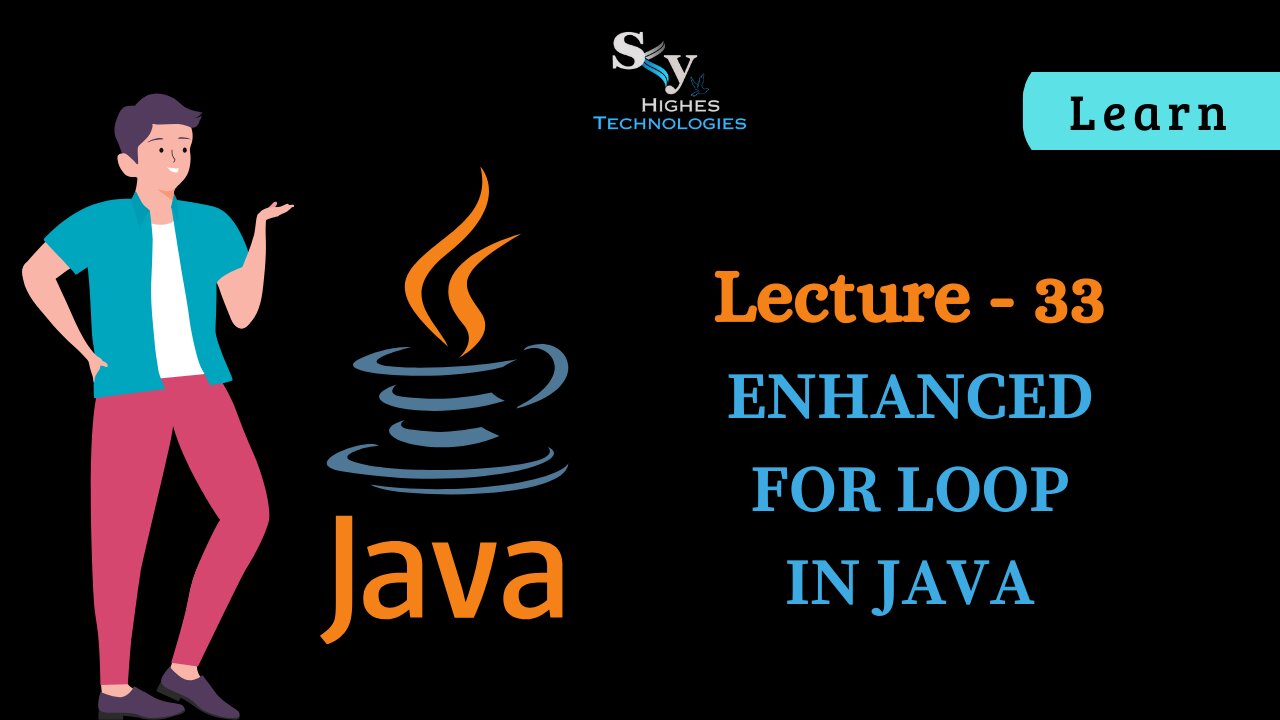Premium Only Content

#33 Enhance for Loop in JAVA | Skyhighes | Lecture 33
Here's a breakdown of the enhanced for loop (also known as the for-each loop) in Java:
Purpose:
Simplifies iterating over arrays and collections.
Focuses on the elements themselves rather than index management.
Offers a more concise and readable way to process elements.
Syntax:
Java
for (elementType variableName : arrayOrCollection) {
// code to execute for each element
}
Use code with caution. Learn more
Breakdown:
elementType: The data type of the elements in the array or collection.
variableName: A variable to hold each element during iteration.
arrayOrCollection: The array or collection you want to iterate over.
Example:
Java
int[] numbers = {10, 20, 30, 40};
for (int num : numbers) {
System.out.println(num); // Prints each number on a separate line
}
Use code with caution. Learn more
Key Points:
No index management: You don't need to track or manage index variables.
Read-only access: The loop variable is read-only, preventing accidental modifications.
Suitable for simple iterations: Ideal for accessing and processing each element without altering the array structure.
Not for index-based operations: If you need to modify elements based on their indices or perform operations that require indices, use a traditional for loop.
Benefits:
Conciseness and readability: Cleaner syntax, making code easier to understand.
Reduced error-proneness: Fewer chances for off-by-one errors or index-related issues.
Focus on elements: Emphasizes the data rather than the underlying structure.
Common Use Cases:
Printing or displaying elements.
Performing simple calculations or transformations on elements.
Searching for specific elements.
Copying elements to another collection.
Remember:
Enhanced for loops are a powerful tool for efficient and readable iteration, but choose the appropriate loop type based on your specific needs.
-
 1:39:16
1:39:16
The HotSeat
12 hours ago👉 STOP Blaming Each Other — Look at the Media!
19.4K24 -
 22:34
22:34
The Pascal Show
8 hours ago $0.01 earnedFEDERAL CHARGES?! Iryna Zarutska's Attacker Gets Hit With Federal Charges After Fatal Train Attack
1213 -
 LIVE
LIVE
Lofi Girl
2 years agoSynthwave Radio 🌌 - beats to chill/game to
216 watching -
 13:05
13:05
Mike Rowe
4 days agoIs College DEAD? Inside America’s #1 Trade School | Sheree Utash From #448 | The Way I Heard It
58.8K22 -

FreshandFit
4 hours agoAyesha Curry Never Wanted Steph Curry
57.6K7 -
 23:28
23:28
DeVory Darkins
9 hours ago $8.21 earnedTrump official ANNIHILATES Democrats in heated debate as CNN gets caught sympathizing with criminals
16.3K62 -
 1:02:26
1:02:26
The Nick DiPaolo Show Channel
11 hours agoPOC Murders Another White Woman | The Nick Di Paolo Show #1790
54.2K65 -
 2:04:29
2:04:29
Inverted World Live
7 hours agoNew UFO Hearing Testimony: Lockheed Martin Has Alien Technology | Ep. 105
65.3K8 -
 5:00:59
5:00:59
Akademiks
5 hours agoYNW Melly MIGHT BE COOKED! Co-D TELLLING? 6ix9ine vs Young Thug . Drake vs Kaicenat? HOLLY
30.1K1 -
 4:46:45
4:46:45
Drew Hernandez
11 hours agoHORRIFYING: FULL FOOTAGE OF IRYNA ZARUTSKA MURDER HAS BEEN RELEASED
30.9K30